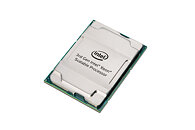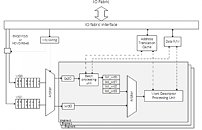Supermicro Intros New Systems Optimized for Edge and Embedded Workloads
Supermicro, Inc. a Total IT Solution Provider for AI/ML, HPC, Cloud, Storage, and 5G/Edge, is introducing a wide range of new systems which are fully optimized for edge and embedded workloads. Several of these new compact servers, which are based on the latest Intel Xeon 6 SoC processor family (formerly codenamed Granite Rapids-D), empower businesses to optimize real-time AI inferencing and enable smarter applications across many key industries.
"As the demand for Edge AI solutions grows, businesses need highly reliable, compact systems that can process data at the edge in real-time," said Charles Liang, president and CEO of Supermicro. "At Supermicro, we design and deploy the industry's broadest range of application optimized systems from the data center to the far edge. Our latest generation of edge servers deliver advanced AI capabilities for enhanced efficiency and decision-making close to where the data is generated. With up to 2.5 times core count increase at the edge with improved performance per watt and per core, these new Supermicro compact systems are fully optimized for workloads such as Edge AI, telecom, networking, and CDN."
"As the demand for Edge AI solutions grows, businesses need highly reliable, compact systems that can process data at the edge in real-time," said Charles Liang, president and CEO of Supermicro. "At Supermicro, we design and deploy the industry's broadest range of application optimized systems from the data center to the far edge. Our latest generation of edge servers deliver advanced AI capabilities for enhanced efficiency and decision-making close to where the data is generated. With up to 2.5 times core count increase at the edge with improved performance per watt and per core, these new Supermicro compact systems are fully optimized for workloads such as Edge AI, telecom, networking, and CDN."








